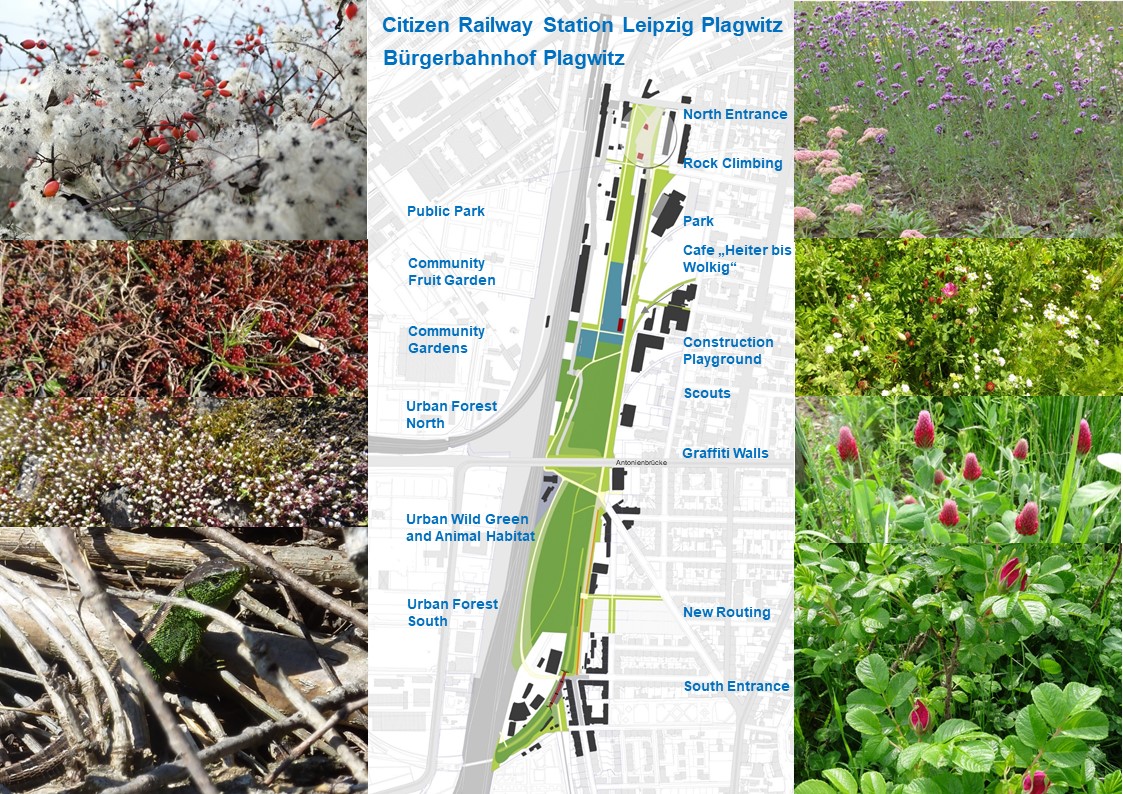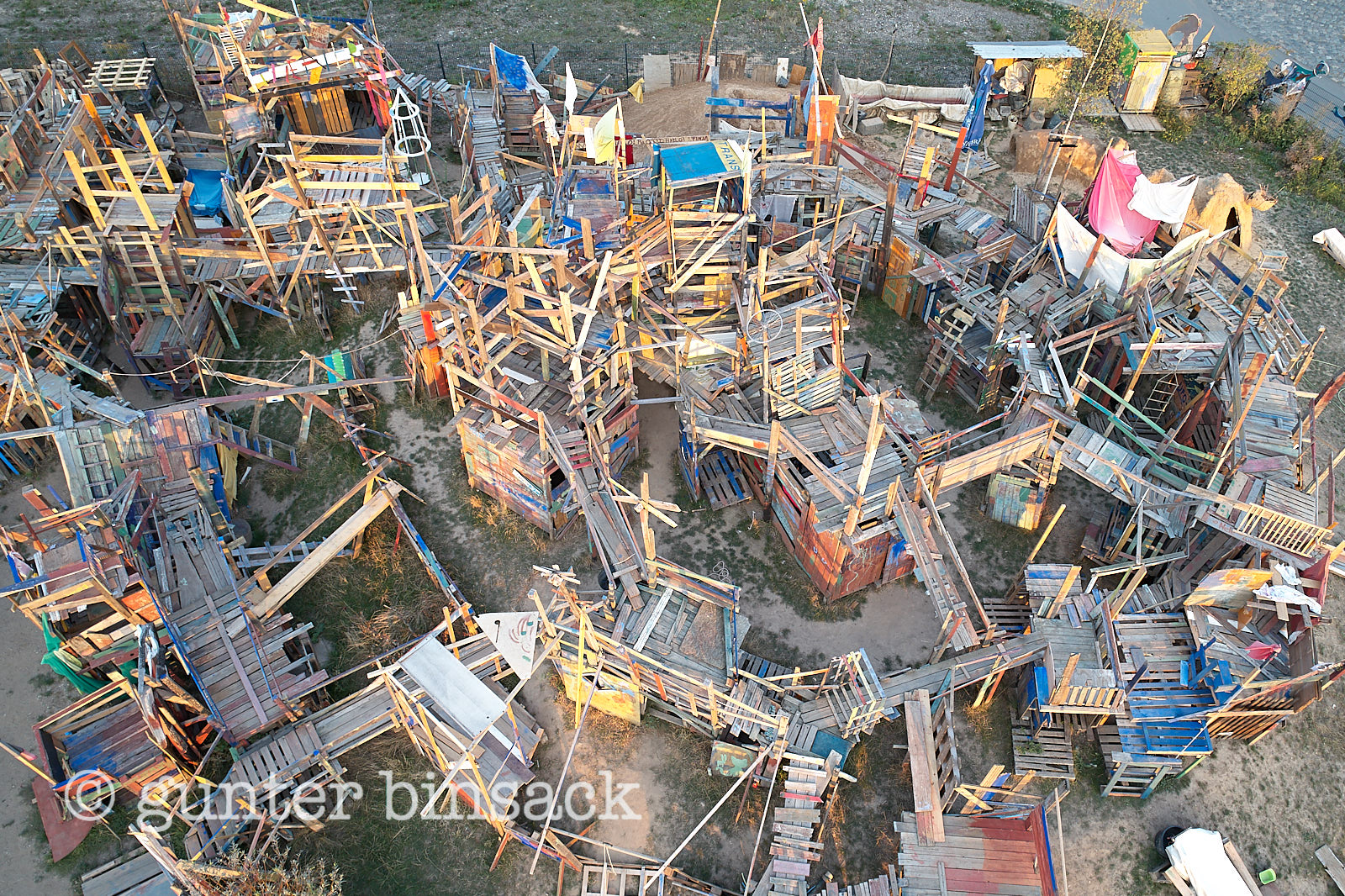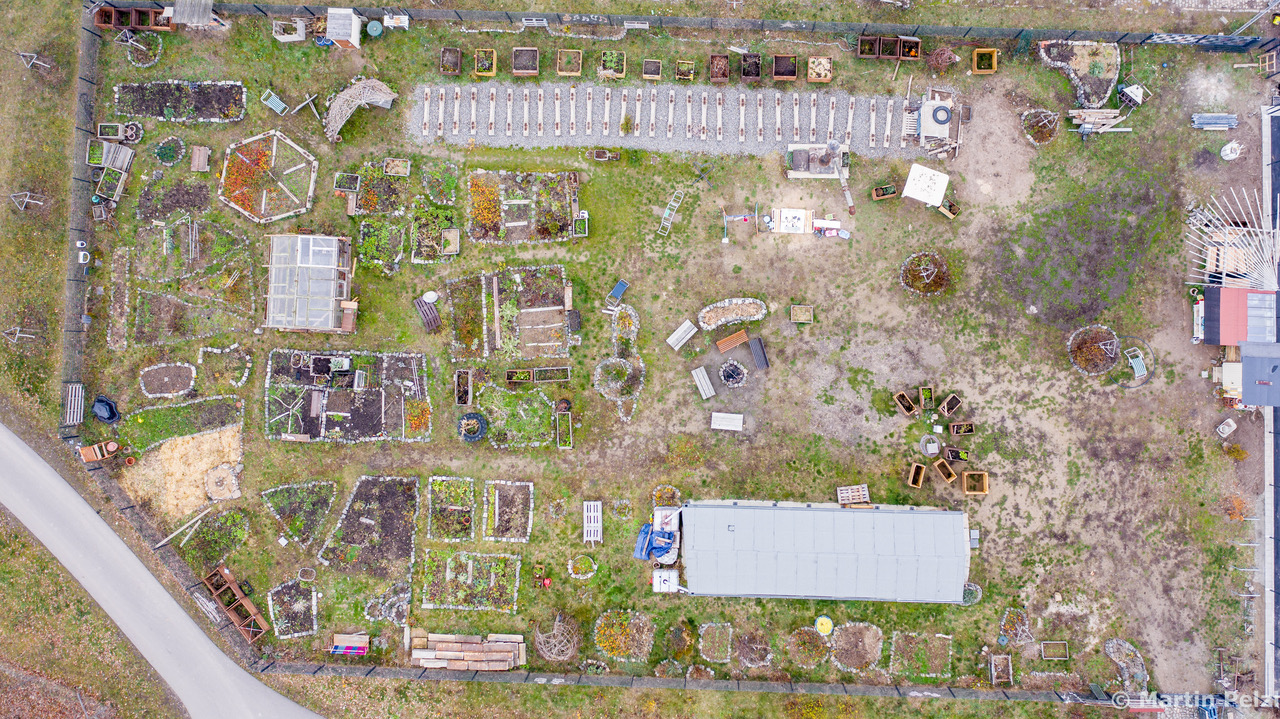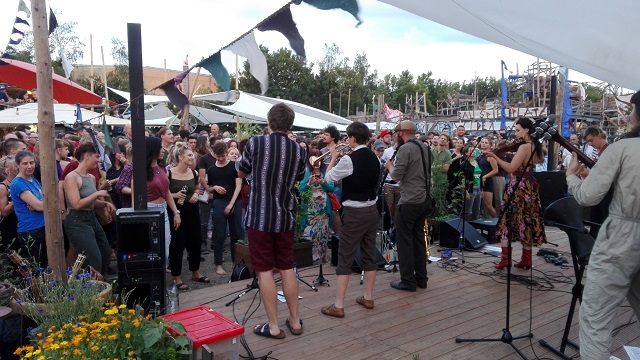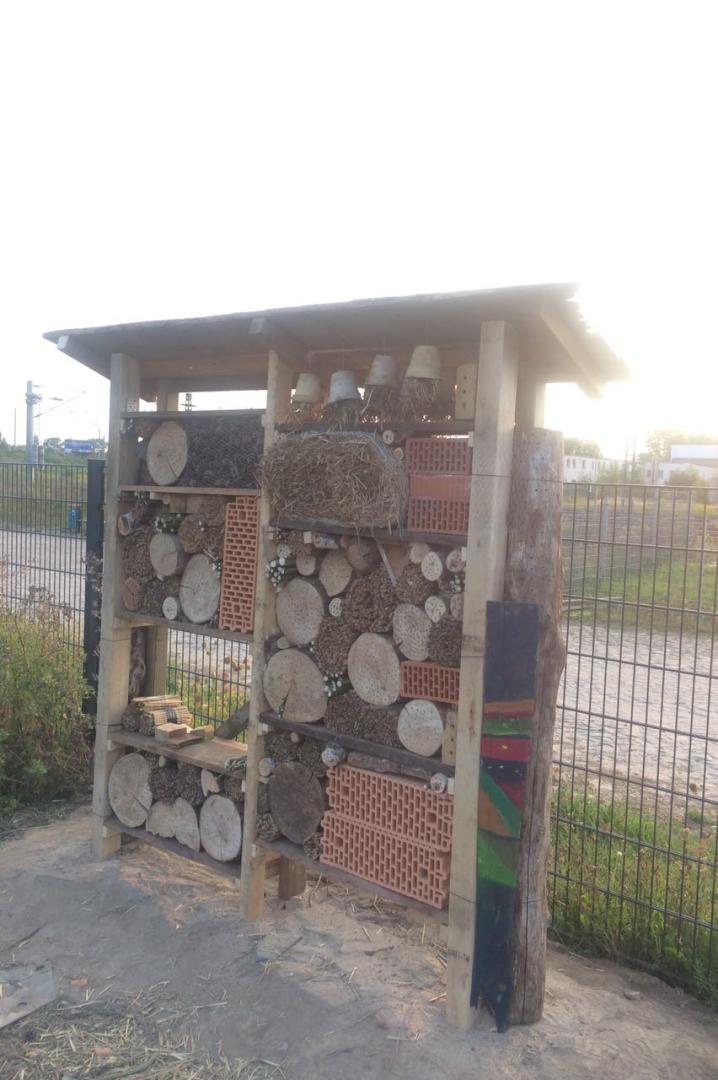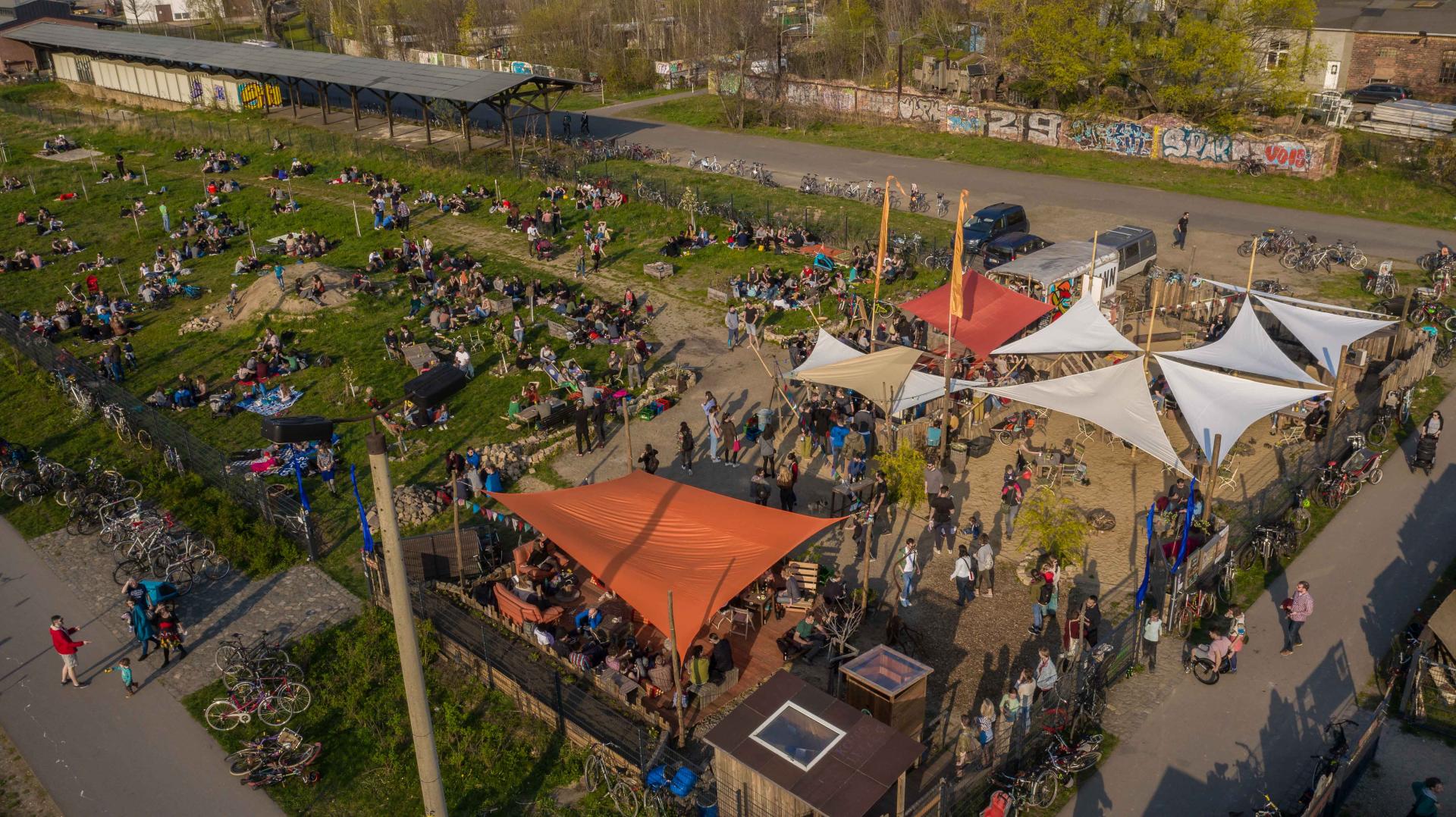Citizen Railway Station Leipzig Plagwitz
Basic information
Project Title
Full project title
Category
Project Description
The Citizen Railway Station (Bürgerbahnhof Plagwitz BBP) is a former industrial railway station that now turned into a 12-hectare green zone. The City Administration of Leipzig and the foundation “Ecken wecken”’ manage the continuous transformation in a co-creative process. Today this inclusive and vibrant place already hosts many activities such as a construction playground, urban gardens, animal habitats, an urban forest, ball game field, graffiti areas and a café – and more is to come.
Project Region
EU Programme or fund
Which funds
Other Funds
The project received EFRE funds within the years of 2009 to 2020.
The total amount was 1.728.910 Euro. They were allocated the following:
1. North Entrance (456.249 Euro), 2. Footpath West Side and Areas for Citizen Projects (435.083 Euro), 3. Footpath Eythraer (93.321 Euro), 4. Cycling Path former Landstraße East (part in the south and north) (744.256 Euro).
Description of the project
Summary
The Citizen Railway Station (Bürgerbahnhof Plagwitz) - is a former industrial railway station that now turned into a 12-hectare green zone. The transformation started in an unconventional way: In 2009, residents got together in the civil-society initiative “Initiative Bürgerbahnhof Plagwitz” and established contact to the urban renewal department of the City Administration. A coordination group, which included the initiative and departments from the City Administration, started a co-creative process to design the future of the area through excursions, breakfasts, planning workshops with the community. The common goals was to create a sustainable, colourful, and inclusive place for everyone in the neighbourhood - an open place for communication and encounter, joint work for the common good in the neighbourhood, social responsibility, relaxation and the possibility to experience nature.
From 2012 onwards, the City Administration bought off the land from the Deutsche Bahn (German Railway Company) to secure the area as a green space. For this, as well as for the identified projects, 3.4 Million Euro were allocated from European (EFRE), national (Urbaner Wald) and city level.
By funding and in thousands of hours of voluntary work a wide range of activities is available for local residents today: construction playground, boy/girl scout area, urban gardening, lizard habitat areas, orchard, fruit grove, ball game field, graffiti areas, café, urban forest as well as walking/cycling connections. It continuously evolves and will never be ‘complete’ whereby this process is managed by ‘Stiftung “Ecken wecken”’ in co-operation with several associations and non-profit companies.
Due to intensive cooperation between the civil society, city administration, politics and business, it became possible to achieve what had not been possible before. The Citizen Railways Station is an example for shifting paradigms in urban planning and development: From participation to
Key objectives for sustainability
The aims were addressing the dimensions of sustainability by: (1) developing a public space for inclusive citizen interaction close to the living places and for strengthening neighbourhood structures; (2) delivering a contribution to the urban green corridor with a diverse and outstanding ecological function and (3) establishing structures for a sustainable management, maintenance and financing model.
- The Citizen Railways Station hosts a variety of projects, relevant for community members. The space comprises used specific dedicated spaces such as for the youth a construction playground and graffiti walls. Also, it offers many opportunities to meet and exchange, fostering community sense and strengthen local identity and the feeling of belonging for all ages and ways of life. Examples are the community gardens or the café.
- The transformation of a former industrial train station into a green urban space had direct positive effects on the soil quality, local heat island effect and noise pollution. Several projects such as the urban gardens and the urban forest contribute to mitigate the climate impact and ecological footprint of the city. On local level, the area possesses better-balanced microclimate and water infiltration. The increase biodiversity contributes to improved public health and brings back nature to the community.
- The success of a sustainable management of such a large area is the co-management structure between the City Administration and the civil society needs an intermediary enabler. ’Stiftung “Ecken wecken”’ provides this role and today manages most of the projects. Further, a user council was established and the local governance structure foresees the exchange with the area committee in issues of wider relevance. The engagement also triggered the community platform “Us in our neighbourhood” where new ideas from the neighbourhood residents are supported, even beyond the Citizen Railways Station.
Key objectives for aesthetics and quality
The Citizen Railway Station symbolises the transition of European cities during the last decades from inner city heavy industry cityscapes and skylines towards inclusive, greener and healthier living environments. By giving the area a new green and inclusive overall concept, it could be included in the overall aim of the city of Leipzig of having a band of unbroken green spaces flowing through the city. Thereby the existing sharp boundaries between the city and the rural are softened and the natural environment plays again a bigger role in the lives of urban dwellers.
The Citizen Railway Station aims for a higher value public space beyond the basic development as a park or green field. The variety of projects for meeting, exchanging, experiencing, occupation and gaming create a unique aesthetic. The community gardens and the community fruit garden for example provide a wide range of domestic species allows the urban dwellers to experience nature will all their senses and be an active part of it. The green elements as well as the construction playground bring a more unorganised almost chaotic scenery back to the city. This is in stark contrast to the organised build up environment of a city with its defined areas for housing, offices, shops and roads and allows an interesting experience for our senses where everyone can individually make his/her discoveries. Further, the area not only gives the opportunity to “consume” but also to actively contribute to its aesthetic in being part of its creation. In this, local specialities are conserved and new interpreted, merged with a variety of materials and forms developing its own aesthetic and beauty. Already today, the space attracts people beyond the immediate neighbourhood who are fascinated by the energy of the space.
Key objectives for inclusion
The Citizen Railway Station was from the onset meant to be an inclusive place for everyone close to the homes of community members; a location for communication, encounter and exchange. The large size of the space poses an opportunity to develop a range of projects, which make the space relevant for everyone and provide a meeting place for residents of different ages and ways of life. Its aim is to create an open place for communication and encounters, joint work for the common good in the neighbourhood, social responsibility, relaxation and the experience of nature.
The space offers experiences free of charge and gives attention to accessibility for disabled community members. An example are the handicap accessible benches. A specific focus group for projects is the youth for whom a number of gaming facilities are available such as the construction playground, the gaming fields and the graffiti walls. The construction playground is thereby a highlight. A pedagogic team supports the users of 6 to 13 years in the construction of objects using recycling and natural materials. In this creative process, motor abilities are fostered and social as well as ecological skills conveyed. In the cycling workshop, kids can repair all kinds of objects and even construct total new bikes out of unconventional material.
A central place for meeting and exchange is the café “Heiter bis Wolkig” which invites to launch with good coffee and something small to bite but also is the stage for free of charge local cultural events.
The inclusive participatory approach of the Citizen Railway Station allows every community member to engage in the planning, designing, organising and managing the projects, just as one’s time allows.
This cross-sectoral and cross-age strategy contributes to form an inclusive neighbourhood also as a role model for the whole city.
Results in relation to category
The Citizen Railway Station is a successful example of how large inner city industrial spaces can be redeveloped in an again meaningful part of the neighbourhood and city. The conversation of the area started in 2009 with a multi-stakeholder working group comprising of several departments of the city administration and civil society representatives. The 12-hectare large area had to first be bought by the city and then prepared for the new use. This mainly involved exchanging parts of the top soil and removing former industrial building parts.
In defining the projects on the large space, the city administration gradually accepted the engagement with the civil society representatives as equal partners. This partnership developed over time to a today co-management of the projects.
The sustainability of the site derives exactly out of this co-creation approach, as relevant projects for the community could be identified and were matched with technical and administrative expertise for its implementation. The relevance of the projects is key to ensure long-term use and engagement by community members of different ages and ways of life. As the area still has opportunities to host further projects, it also stays relevant for future community members and keeps being vibrant. It provides a space to bring new arrivals and traditional inhabitants together, which is especially important in a growing city and offers them the opportunity to define a common identity.
Within the wider view, the newly established green area also contributes to the aim of the city in providing public spaces in close proximity to each resident. Therefore, the citizen Railway Station is not a standalone project but is integrated into a wider urban vision.
How Citizens benefit
The Citizen Railways Station was from the onset meant to be a place not only FOR the community but foremost WITH the community. Different members of the civil society and the City Administration engaged themselves from the beginning in a co-creative process where all sides acted as equal partners. The intensive dialog brought out realistic and relevant projects, which fit to the needs and wishes of the community. One example is the co-production of a multi-purpose playing field. Due to bureaucratic constraints, the city was planning only the construction of a basketball field. Local youth clubs, socio-cultural centers and the area council highlighted the necessity for a multi-purpose playing and jointly with the city administration developed such a field in a short while.
This is only one of the examples how the involvement of the civil society is the key to create and maintain such a vibrant mixed space.
Today, the management of the space is shared, whereby the city administration is managing projects like the public walkways and the urban forest. Similarly, the community took on managing responsibility through ‘Stiftung “Ecken wecken”’. In a formal agreement, the city is leasing parts of the land to the foundation for a symbolic small amount. In contrary, the foundation accepted the responsibility to manage for example the community garden, the community fruit garden, the fruit grove, the construction playground and the cafe. This also contributes to experience democracy in front of the doorstep on concrete level as different interests have to be balanced, decisions being made, scare money to be allocated and time to be volunteered. The good experiences from the Citizen Railway Station inspired the set-up of the platform “Us in our neighbourhood” where residents of the neighbourhood can bring forward their ideas for joint implementation, even beyond the Citizen Railway Station.
Innovative character
At the beginning, there was the brave vision from many stakeholders in the city, that a large are of 12 hectare could be developed into a green, active public space in a co-creation process. It was clear to all that this would mean a long-term engagement.
All stakeholders agreed to set up a dedicated project committee and engage in a co-creative process, which had never been done before. The City Administration involved a number of Departments and has to engage in cross-sectoral planning, a not yet often practices approach. From the civil society a spectrum of practitioners, politics, local clubs and businesses were brought together to each contribute their individual knowledge and strength. This co-creation approach is key to develop a relevant space for residents and finding local solutions for existing challenges.
It was decided to only develop a common overall vision of the area. Concrete projects and details where left to be developed incrementally. This incremental approach gave time to collect and develop ideas from the civil society and neighbourhood residents and allows testing new urban ideas such as: (1) The first Construction Playground in Leipzig where a pedagogic team supports children in the creation of new objects from recycling and nature materials. In this creative process, physical, social and ecological skills are fostered. (2) An urban forest of 6,5 hectare, a new concept that is scientifically monitored to test forests in their application, performance and function to contribute to sustainability and diversity of flora and fauna in urban areas. (3) Implementing the international concept of the edible city, which is implemented in the projects of the urban gardens, the fruit garden and the fruit grove.

